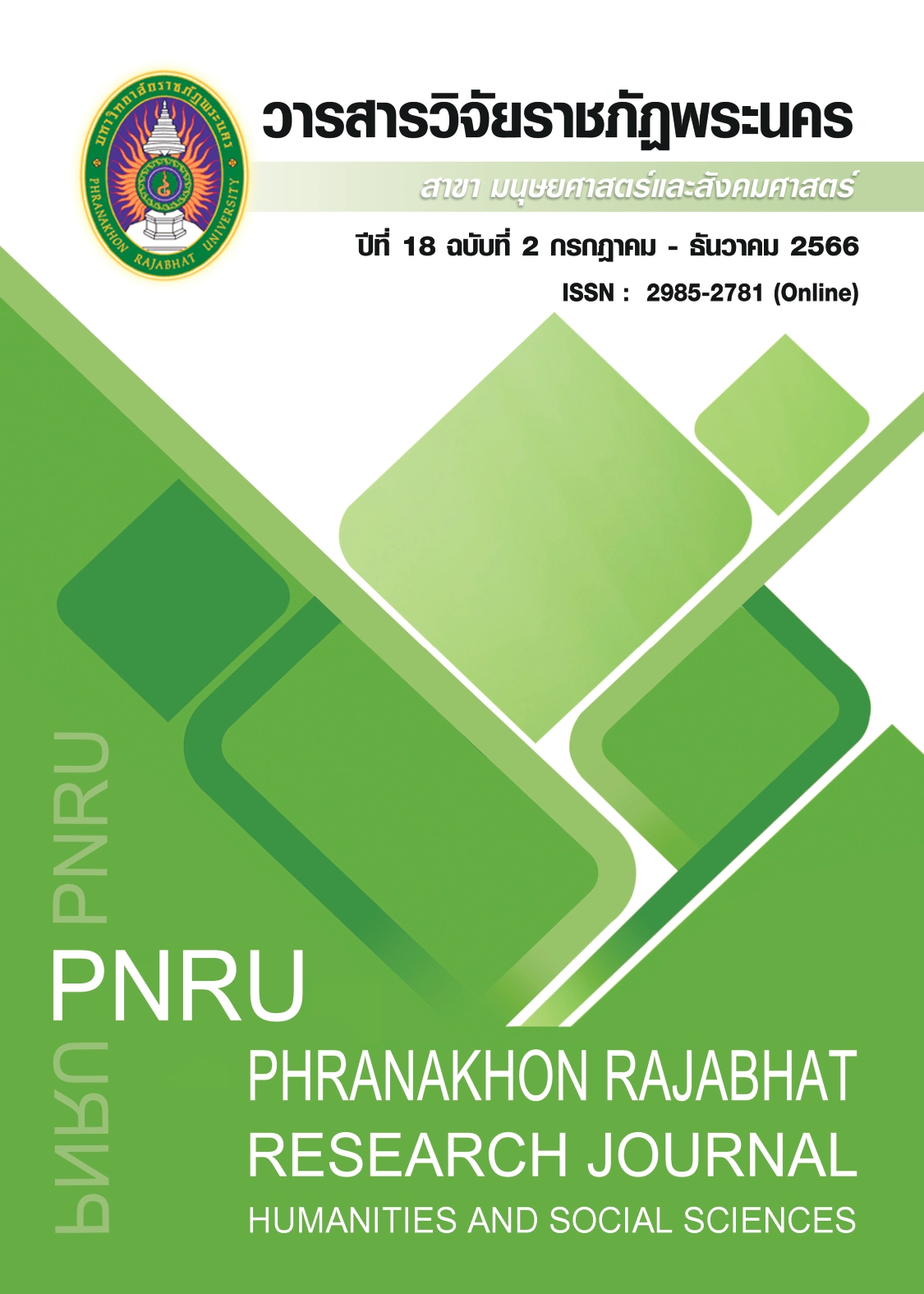ROUTE DEVELOPMENT AND LEARNING CITY TOURISM ACTIVITIES CULTURAL HERITAGE, NAKHON SI THAMMARAT
Main Article Content
Abstract
This research is mixed-methods research. The objectives are (1) to study the potential of tourism in the cultural heritage learning city and (2) to develop activities and tourism routes in the city of learning cultural heritage The qualitative data was collected from a specific sample group of 10 tourist attractions in the old city of Nakhon Si Thammarat and 10 representatives from the government and private sectors. Collecting data from the tourism resource base for potential assessment through a semi-structured interview form on opinions towards the design of tourism routes. A synthesized form of the assessment of tourism potential. Assessment of tourism routes and small group meetings to take lessons learned in project implementation. The qualitative data analysis was summarized by content analysis, and the results of the evaluation of tourism routes were estimation scales. The descriptive statistics were the mean and standard deviation. The study found that the aspect with the highest average potential assessment of the tourism resource base result was the area of tourism resources at a high level and moderate participation. The development of learning city activities and tourist routes takes 4 main considerations: (1) history and story; (2) community life; (3) food; and (4) architecture by finding "outstanding, famous, and popular.” The results of activities and tourism routes in the learning city were: (1) a route that connects stories or history (a big story); and (2) a path that connects small stories or community stories. In addition, there is coordinated tourism in the learning city as well.
Article Details

This work is licensed under a Creative Commons Attribution-NonCommercial-NoDerivatives 4.0 International License.
Each publish articles were copyright by Phranakorn Rajabhat University
Any contents which appeared in each articles in the journal were authors personal opinion. It did not relate to Phranakorn Rajabhat University and other instructors in the university. Each authors would take responsibility on their articles. If there are any mistake, the authors will take responsibility themselves
References
Boonlae, W. Wongmonta, S. Na Thalang, C. & Pongponrat, K. (2021). A study of potential composition of cultural tourism resources in Chanthaburi Province. Journal of The Association Of Researchers, 26(1), 46-55. (In Thai)
Chuan Sang, P. (2020). Assessment of the community's potential to develop as an ecotourism and cultural destination: a case study Ban Tha Long Community Ubon Ratchathani Province and Ban Tha Wat Community Sakon Nakhon Province. (Master degree Thesis). Silpakorn University, Bangkok. (In Thai)
Department of Tourism Office of Tourism Service Development. (2014). Guide for quality assessment of cultural attractions. Bangkok: The Veterans Affairs Printing Office under the Royal Patronage of His Majesty the King. (In Thai)
Department of Tourism. (2023). Tourism trend in 2022. Bangkok: Department of Tourism. (In Thai)
Klindeeplee, J. (1998). Assessing the potential of tourist attractions for ecotourism, case study: Sai Yok National Park Kanchanaburi province. (Master degree Thesis). National Institute of Development Administration. (In Thai)
Piandee, T. (2019). The development of peranakan cultural tourism routes in the old town area of Takua Pa, Phang Nga province. Journal of Sustainable Tourism Development, 1(2), 8-23. (In Thai)
Phrakhru Phromkhetkanarak, (2022). Interview.
Pattaratanakun, A. (2017). Planning for Marketing 4.0 in Training Manual of Brand Building in Digital Tourism organized by Nakhon Si Thammarat Office, Tourism Authority of Thailand. (Copied).
Rocharungsat, P. (2010). Community tourism. Bangkok: Odeon store publishing house. (In Thai)
Sakdiyakorn, M. (2015). Training materials for creative tourism business development, 3rd year. Prepared by Creative Economy Development Institute. Tourism, historical and cultural sites Mahidol University (reproduce). (In Thai)
Siricharoen, T. & Sriplang, N. (2017). Design in tourism route of cultural Tai Lom, Phetchabun Province. Phetchabun: Phetchabun Rajabhat University. (In Thai)
Srirat, P., Zimik, R. P., Nawakanworrakul, S., & Yuedman, K. (2017). The tourism potential in Thamyai Sub-district, Thungsong District, Nakhon Si Thammarat Province. Narkbutparitat Journal, 10(Special issues), 256-269. (In Thai)
Srisa – Ard, B. (2013). Statistical methods for research Volume 1. (5th ed.). Bangkok: Suweeriyasan publishing house. (In Thai)
Sutjasen, A., Tadtiam, N., Chiwaratattan, K. & Chomjit ,K. (2018). Image of Nakhon Si Thammarat’s tourist attraction for foreign tourists. Phathumthani University Academic Journal, 10(2), 234-246.
Susan, R., Neil, H., and Moira, C. (2007). Online Customer Experience: A Review of the Business- to-Consumer Online Purchase Context. International Journal of Management Reviews, 13, 24-39.
Theerawongsakul, P. (2022). Tourism trends that will shake up 2022 and beyond. Retrieved from https://www.tatreviewmagazine.com/article/tourism-trends-that-will-shake-up-2022-and-beyond/ [2022, 13 Jan.]
Tourism Development Institute for Environmental Conservation. (2002). Supporting documents for training courses in tourism policy and practice. Bangkok: Tourism Development Institute for Environmental Conservation. Bangkok: Srinakharinwirot University. (In Thai)
Wannathanom, C. (2016). Tour Planning. Bangkok: Printing and Publishing.
Wichaikun, A. and Wongmonta, S. (2021). Approaches for Development of Cultural Tourism in Nakhon Si Thammarat Province. Journal of the Association of Researchers, 26(3), 1-3. (In Thai)


